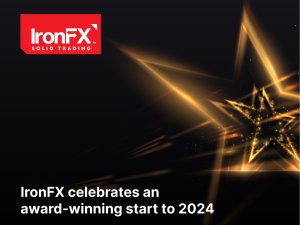Time is ripe for the entire banking sector to embrace blockchain.
After having downplayed it for a long time, banks and financial institutions have begun to acknowledge the potential of blockchain.

Last year, Goldman Sachs named Mathew McDermott as its first-ever Head of Digital Assets. McDermott believes that a new financial system is emerging where all the assets, liabilities, and transactions will be native to the blockchain.
Big Names Banking on Blockchain
Goldman Sachs is not the only financial institution dipping its toe in the blockchain industry. Signature Bank has its own blockchain-based Signet digital payments system that facilitates real-time payments and money transfers.
JPMorgan Chase launched its own digital coin, the JPM Coin, in October last year to facilitate global payments. JPMorgan has also set up a Blockchain Center of Excellence, which researches blockchain to develop solutions across its various business divisions.
Singapore-based DBS Bank issued its first-ever security token offerings with blockchain in May 2021. The bank’s DBS Digital Exchange (DDEx) leverages blockchain technology to facilitate secure and transparent fundraising from the private market.
While many more banks are exploring the possibility of integrating blockchain into their existing financial systems, many are still sitting on the fence. They risk being left behind as competitors leap forward with blockchain to build their dApps, DeFi platforms, tokens, and other offerings.
The Challenge of Getting Started
Banks and financial institutions are highly regulated for a reason. They are responsible for handling other people’s hard-earned money, and they play a vital role in the economy. Security, costs and transaction speeds are paramount when deciding what blockchain network they want to build their offerings on.
There are a variety of blockchain platforms such as Ethereum, QANplatform, Polkadot and others. None of them is perfect. It’s unlikely that you’ll find a perfect chain that all the world’s banks could use to build their solutions.
However, QANplatform delivers on things that matter the most: ease of use, security, cost, and transaction speed. QANplatform is essentially a quantum-resistant hybrid blockchain platform whose lattice-based cryptography secures your data even against quantum computer attacks.
It enables enterprises to build and deploy decentralized applications, tokens, and other solutions within minutes on hardware, cloud platforms, and virtualized architecture. In fact, QANplatform is the fastest blockchain to deploy to cloud platforms like Amazon AWS or Linode.
As a hybrid blockchain, it allows institutions to choose what information to keep on the private chain and what information on the QAN public chain. The public blockchain handles 1,600 transactions per second (TPS) while the QAN private blockchain processes 97,000 TPS.
By comparison, Ethereum is currently capable of handling only about 30 transactions per second. Even though Ethereum is the dominant blockchain, it has been incapable of handling the boom in DeFi and NFTs as millions of new users entered the DeFi space. It is taking longer than ever before to process transactions, and gas fees have shot through the roof.
Many institutions have been exploring alternatives to move their projects away from Ethereum. The arrival of Ethereum 2.0 would solve these issues. It would move Ethereum from a Proof of Work consensus mechanism to a Proof of Stake mechanism. However, Ethereum 2.0 is more than a year away, which is a long time in the fast-moving blockchain world.
Layer-2 solutions have emerged to solve the scalability issues of Ethereum. Polkadot is a fine example of a Layer-2 solution. It is a smart contract blockchain that aims to bridge the independent blockchains to facilitate seamless communication and asset transfer between them.
Polkadot has two different types of blockchains: The relay chain where transactions are settled, and the user-created custom blockchains called parachains. The parachains depend on the relay chain to communicate with one another. They can also connect with external networks like Ethereum and Bitcoin.
At this point, Polkadot is quite picky on which projects can lease a parachain to build on its platform. That’s because the relay chain supports only up to 100 parchains. Polkadot holds a slot auction to pick the projects, dramatically reducing the chances for most institutions. If your project doesn’t need a dedicated parachain slot, you can participate with a “parathread” on a block-by-block basis.
Conclusion
Banks sitting on the fence would be better off embracing blockchain quickly rather than waiting until their wealthy clients start leaving them to enjoy instantaneous payments and money transfers elsewhere. Projects like QANplatform are giving them a fast, secure, and cheap way to dabble into the world of blockchain.









